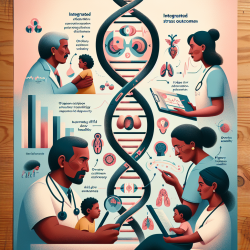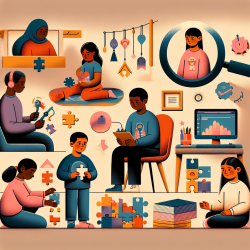Introduction
As urbanization continues to reshape our environments, understanding its impact on health becomes crucial. A recent study titled "Associations between Greenness, Impervious Surface Area, and Nighttime Lights on Biomarkers of Vascular Aging in Chennai, India" sheds light on how urban landscapes influence cardiovascular health. This blog explores how these findings can be applied to improve children's health outcomes, particularly in urban settings.
The Study's Key Findings
The research conducted in Chennai, India, analyzed the relationship between urban environmental factors and early vascular aging (EVA) biomarkers. The study found that higher exposure to impervious surfaces and nighttime lights, coupled with lower greenness, was associated with elevated blood pressure and reduced flow-mediated dilatation (FMD). These biomarkers are indicative of cardiovascular stress and potential future health issues.
Why This Matters for Children's Health
Children are particularly vulnerable to environmental influences due to their developing bodies and minds. The study's findings suggest that urban environments with limited green spaces could contribute to increased cardiovascular risk factors. For speech-language pathologists and other practitioners focused on children's health, this highlights the importance of advocating for greener urban spaces.
Practical Applications for Practitioners
- Encourage Outdoor Activities: Promote outdoor play in green spaces to enhance physical activity and reduce stress, which can positively impact cardiovascular health.
- Advocate for Urban Planning: Engage with local policymakers to support the development of parks and green spaces in urban areas.
- Educate Families: Inform parents about the benefits of green spaces and encourage family activities in natural settings.
Encouraging Further Research
While the study provides valuable insights, further research is needed to explore the long-term effects of urban environments on children's health. Practitioners can contribute by participating in or initiating studies that focus on the intersection of urban planning and child health outcomes.
Conclusion
The study underscores the importance of green spaces in urban environments for cardiovascular health. By integrating these findings into practice, speech-language pathologists and other child health practitioners can play a pivotal role in promoting healthier environments for children.
To read the original research paper, please follow this link: Associations between Greenness, Impervious Surface Area, and Nighttime Lights on Biomarkers of Vascular Aging in Chennai, India.










